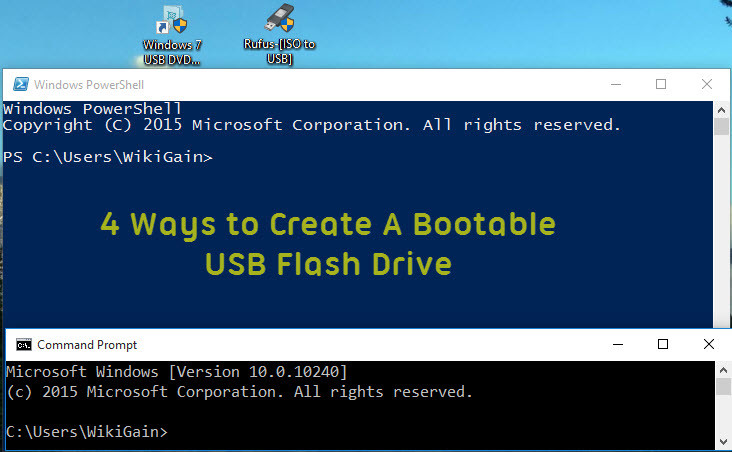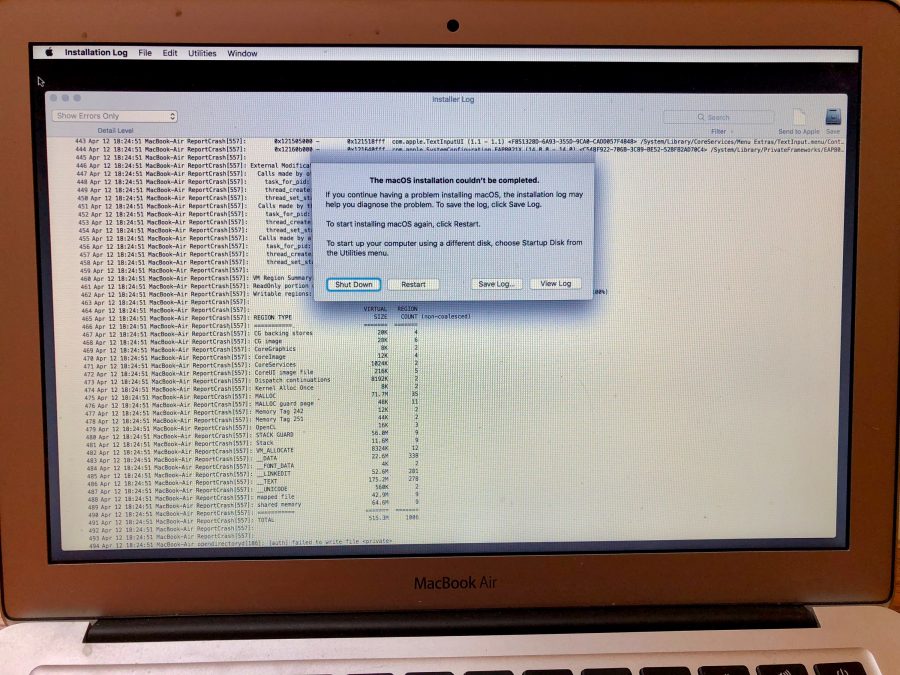Sep 20, 2016 It saves all your personal files, apps and user data, while a so-called clean install of Sierra will erase all data on the startup drive and replace it with a clean copy of OS. But, if you like an idea of giving your Mac a fresh start with a new macOS and nothing else, a clean install. In this article we'll run through the steps necessary to create a bootable installer of the Mac operating system, whether it's so you can install the latest version of the macOS on multiple Macs. Dec 26, 2017 We’ve shown you how to securely wipe a hard drive with your Mac, and doing so in Recovery Mode isn’t really different from doing so within macOS. To get started, click the Disk Utility option. Depending on how you started Recovery Mode, you may be presented with the option to start Disk Utility right away, as seen above. This article guides you through the process of performing a clean installation of macOS 10.15 Catalina using the bootable USB drive method, rather than upgrading your Mac using Apple's standard. Jun 22, 2017 Why opt to clean install macOS High Sierra. A clean install of macOS High Sierra will ensure the maximum performance for your Mac. The reason is pretty straight forward: by formatting your Mac drive you will eliminate all the issues accumulated over time and have a clean slate to start again. Sep 25, 2017 To complete the clean install procedure described below, you'll need: macOS High Sierra Installer, available from the Mac App Store. A 16GB or larger USB flash drive Notice: USB drive is needed for a clean install on your Mac’s startup drive. If you plan to clean install macOS on a non-startup drive, you don't need it.
- Clean Install Mac Os New Hard Drive Windows 10
- Reinstall Mac Os X Clean
- Find Hard Drive On Mac
- Install New Hard Drive Macbook
- Fresh Install Macos New Hard Drive
Be sure to check out if you need the firmware update from the above link.
Install or Reinstall OS X from Scratch
Be sure you have backed up your files because the following procedure will remove everything from the hard drive.
Boot to the Recovery HD:
Restart the computer and after the chime press and hold down the COMMAND and R keys until the menu screen appears.
Erase the hard drive:
1. Select Disk Utility from the main menu and click on the Continue button.
2. After DU loads select your startup volume (usually Macintosh HD) from the
left side list. Click on the Erase tab in the DU main window.
3. Set the format type to Mac OS Extended (Journaled.) Optionally, click on
the Security button and set the Zero Data option to one-pass. Click on
the Erase button and wait until the process has completed.
4. Quit DU and return to the main menu.
Reinstall OS X: Select Reinstall OS X and click on the Install button.
Note: You will need an active Internet connection. I suggest using Ethernet if possible
because it is three times faster than wireless.
This should install the version of OS X that you had installed.
If you need to start with Snow Leopard:
Clean Install of Snow Leopard
Be sure you have backed up your files because the following procedure will remove everything from the hard drive.
1. Boot the computer using the Snow Leopard Installer Disc or the Disc 1 that came
with your computer. Insert the disc into the optical drive and restart the computer.

After the chime press and hold down the 'C' key. Release the key when you see
a small spinning gear appear below the dark gray Apple logo.
2. After the installer loads select your language and click on the Continue
button. When the menu bar appears select Disk Utility from the Utilities menu.
After DU loads select the hard drive entry from the left side list (mfgr.'s ID and drive
size.) Click on the Partition tab in the DU main window. Set the number of
partitions to one (1) from the Partitions drop down menu, click on Options button
and select GUID, click on OK, then set the format type to MacOS Extended
(Journaled, if supported), then click on the Apply button.
3. When the formatting has completed quit DU and return to the installer. Proceed

with the OS X installation and follow the directions included with the installer.
4. When the installation has completed your computer will Restart into the Setup
Assistant. After you finish Setup Assistant will complete the installation after which
you will be running a fresh install of OS X. You can now begin the update process
by opening Software Update and installing all recommended updates to bring your
installation current.
5. If you are planning to sell or give your computer away, then do the following:
After you reformat your hard drive and reinstall OS X, the computer restarts to a
Welcome screen and asks you to choose a country or region. If you want to leave
the Mac in an out-of-box state, don't continue with the setup of your system. Instead,
Clean Install Mac Os New Hard Drive Windows 10
press Command-Q to shut down the Mac. When the new owner turns on the Mac,
Reinstall Mac Os X Clean
the Setup Assistant will guide them through the setup process.
Download and install Mac OS X 10.6.8 Update Combo v1.1.
Apple on Wednesday released OS X El Capitan as a free upgrade and as a result, lots of Mac users are busy upgrading their desktop and notebook computers.
As with OS X Lion, OS X Mountain Lion, OS X Mavericks and OS X Yosemite, Apple makes it easy for users to install the upgrade by downloading El Capitan from the App Store and running the installer.
See also: Apple OS X El Capitan review: A more refined Mac experience
For most users, this is the best way to upgrade because it means your existing programs and data remain where they are. Sometimes, however, you don't want to do a regular OS upgrade. Maybe you want to start fresh or maybe you need to install El Capitan on a machine that doesn't already have OS X installed. For those users, the best bet is to do a clean installation, erasing the hard disk and installing from scratch.
If you want to do a clean install of OS X El Capitan on your Mac — or on a new hard drive — you can do it, it just takes a bit of work.
If you've gone through the clean install processes in the last few years, these instructions will look familiar. (That's because they are almost the same as past years, albeit with changes made for the proper OS name). With a little time, it's relatively easy to create a bootable copy of OS X El Capitan that you can run from a USB stick or other drive.
Note: A clean install will erase all of the contents on your disk drive. Make sure to back up your important files, settings and apps before proceeding.
Find Hard Drive On Mac

Install New Hard Drive Macbook
After the Install
Fresh Install Macos New Hard Drive
After installing OS X El Capitan, you can start restoring your programs and settings using either a Time Machine backup or Migration Assistant.